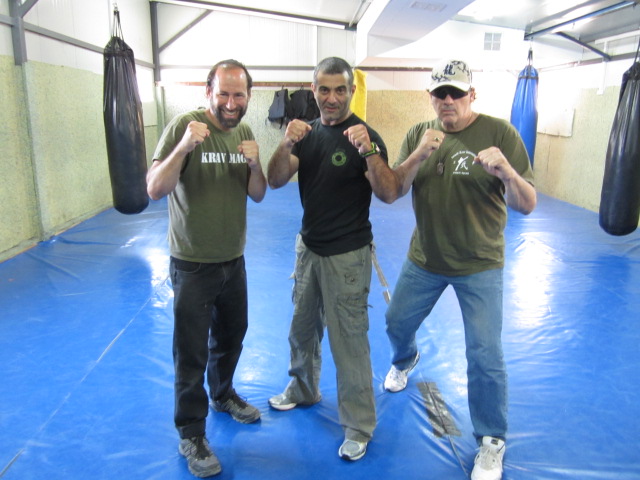- Home
- Krav Maga Blog
- Krav Instructors
- Train in Israel
- Tour Train Israel
- Krav Shop
- DVD
- Kickboxing
- IKI Near Me
- Seminars
- IKI Membership
- On-Line Training
- Krav Maga Training
- Testimonials
- History Krav Maga
- Instructors Page
- Past Blogs
- Spanish
- Italian
- Certification
- Contact
- Holland Seminar
- Vienna Seminar
- Poland Seminar
- Italy Seminar
- Belt Requirements
Krav Maga - Simple
by Moshe katz
May 7, 2015

We like to keep Krav Maga simple; in fact, it seems that IKI Krav Maga keeps getting simpler. Years ago, I prided myself on the number of techniques I knew for each potential attack or grab. For a wrist grab I could do techniques from Jujitsu to Hwarang Do to various forms of Kung Fu. I collected techniques and had a whole folder full of them. Today I try to do as few techniques as possible.
I have learned that in a stressful situation knowing more techniques will only hold you back; the more techniques you know the less quickly your brain will process the information and chose a technique. We need to keep things simple
Here is the core of the problem: Most martial artists have a very high opinion of their abilities. They tend to believe that their performance in the controlled dojo environment can be duplicated when confronted by thugs in a back ally in the middle of night. We tend to overestimate our abilities. Some of us train like we are in the movies. Our egos get the better of us and we come to believe that we are Superman.
Many martial arts systems also tend to ignore the element of pain. They train as if we will always be pain free. This is unlikely to be the case in a street fight. Most likely we will get hurt and will have to fight hurt. Back in the days when I trained with Shidoshi Frank Dux in LA, he always insisted on 'Trauma Training' where we would absorb some blows to condition us to pain. He was aware of reality and that reality involves pain. I recall when Shidoshi Dux would ask for volunteers on whom to demonstrate, often it was painful to be hit, but again, this was preparation for the real world. I recall one side kick in particular that left quite an impression. In the real world there are no pads or protective gear, you have to learn to deal with pain and keep fighting back.
This is all part of reality. If we are to survive, we must learn to accept reality.
The reality is we are human and as humans we have many limitations. We are caught off guard, caught by surprise and we will be lucky if we can remember our names at that moment. All we can hope for is to properly execute some simple gross motor moves. The moves we use in Krav Maga have been proven in real life situations. They are not fancy, they are not complicated and to some they might not seem very impressive, but, they could save your life. In fact, many soldiers who learned some basic techniques were able to react instinctively, years later, and save their lives using these simple Krav moves.
Judo…for my black belt I had to master about 20 -25 Judo moves, most of them I doubt I would be able to use in a real situation. The few that I feel confident with I incorporated into our Krav training. On the few occasions that I watch Olympic Judo I noticed that even the world's top Judo players use only a small number of moves. The fancy moves one hardly ever sees. Why? Because the stress of a tournament can make such moves hard to execute, and a tournament can never begin to compare to a real-life situation.
With a tournament you have ample notice, time to prepare, time to watch video tapes of your opponents. You are well rested; you are at your peak. All of these elements are lacking in a street confrontation. The only law that applies is Murphy's Law; whatever can go wrong – probably will.
So we keep it simple. As the late great Bruce Lee used to say, the goal is simply to simplify. He said we should view martial arts like a sculpture; we start with something big and keep chipping away; not daily addition but daily subtraction. Eventually we end up with a beautiful sculpture, and in our case, a street worthy martial art.
Bruce Lee "I would rather have ten techniques that work for me than one hundred that work against me."
We in Krav Maga could not agree more.
Part of the idea of keeping things simple is to avoid strategies that have not proven themselves in stressful situations, such as Side Stepping self defense